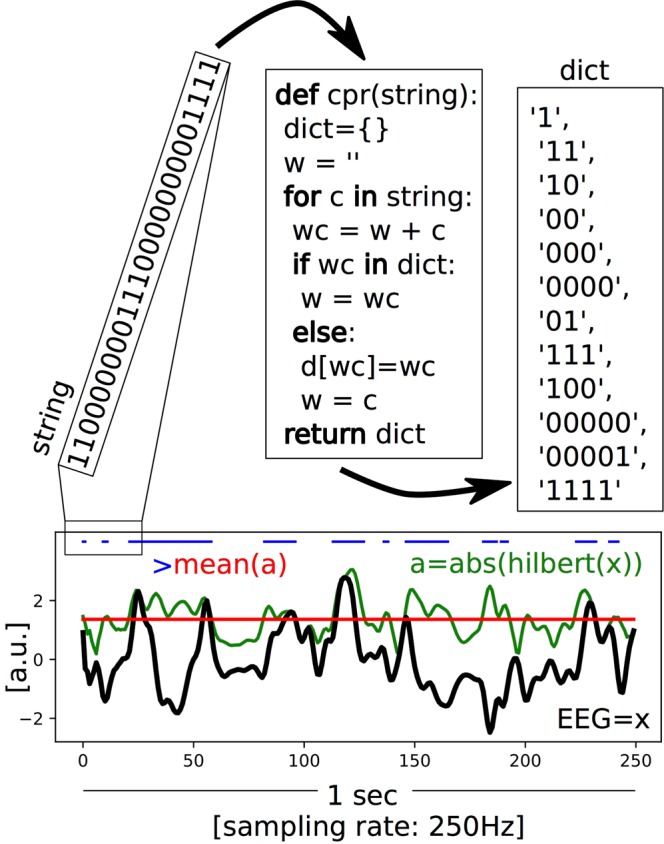Figure 7.

Schematic of the LZs computation. An example EEG signal with a sampling rate of 250 Hz and a length of 1 sec is shown in black (x). The mean (red) of the absolute value of its analytic signal (green, a) is used to binarize the signal (blue). The encoding step of the Lempel-Ziv algorithm is then applied to the first 25 entries of that binarized signal (in this illustration), creating a dictionary of the unique subsequences, which is then normalized by dividing the raw value by those obtained for the same randomly shuffled binary sequence. This provides a value between 0–1 that quantifies the temporal diversity of the EEG signal (LZs).
